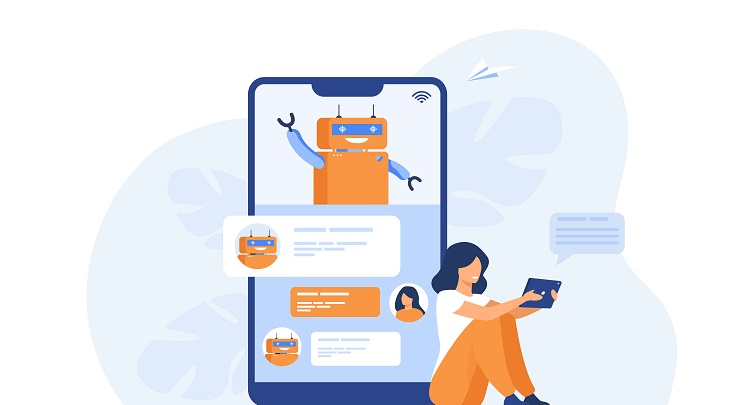So why is this word even in the dictionary? Well, we’ve got Oprah Winfrey to thank. The Oprah aha moment expression is a prime example of how her cultural influence extends even as far as language. According to Oprah, “you can’t have an Aha! moment unless you already knew it. The Aha is a remembering of what you already knew, articulated in a way to resonate with your truth”. But that’s enough of the celebrity name-dropping. Instead, let’s look at what it can mean for you and your business.
What does the Aha Moment Really Mean?
To understand what it means, you have to understand the effect your emotions can have on your behaviors and decision-making. Emotions are linked to chemical messages released from our brains. For example, when you experience something rewarding, brain activity includes the release of dopamine, oxytocin, or serotonin. These chemicals make you feel positive emotions and motivate you to keep going. When the effects of the feeling are powerful, it drives your behaviors and decision-making. In relation to your customers, the “Aha” moment is the point at which they suddenly realize the value of your product in terms of how it works and the value it will add to their lives. Aha moments are unique and subjective and can occur at any stage of the customer lifecycle. They are also impactful enough to create a powerful impression and keep your customers coming back for more.
Aha Moment Examples
Let’s take a look at some real-life aha moment examples of some well-known brands:
Facebook is one of the most recognized Aha moments. It’s when a user adds ten friends within the first seven days of signing up. It shows that they understand the product’s value and have achieved a certain level of value and creative insight during that time.
For Twitter, the aha moment is when a user follows 40 users, with at least one-third of them following back. The only issue for Twitter is that their user onboarding experience lacks the required push to the Aha moment.
Prisync
For Prisync, a competitor’s price tracking software, the Aha moment is when a shop owner makes a profit with a better price offer. This is an excellent example of an aha moment because it pushes the user into getting some value from the product.
Slack
For Slack, a proprietary business communication platform, the aha moment is when a team reaches 2000 messages in a workspace. They’ve likely adopted the product into their processes by the time this happens.
Dropbox
Dropbox, a file hosting service, identifies its aha moment very early on in the user journey. It is when a user saves one file in a folder on one device. It’s an aha moment that requires minimal effort, but it is none less effective.
Trello
Trello, a collaboration tool and list-making application, also identifies an aha moment very early on in the customer journey. The aha moment is when a user moves a card from one stack to another.
Scraper API
Scraper API handles browsers, proxies, and CAPTCHAS. Its aha moment is that a user can access a sophisticated and reliable proxy network straight out of the box. The number one goal is to get as many new clients as possible to try the API. To encourage a user, they offer 1,000 free API calls to get started straight away.
Cloud Campaign
For Cloud Campaign, the aha moment is when a marketing agency sees the product with its branding on it. Cloud Campaign is a social media marketing platform for SMBs and agencies. To help a user reach this moment, they customize the product for individual customers. This approach has led to decreased churns, down to less than 1%.
LiveAgent
LiveAgeny is a top-rated help desk software and identifies its product aha moment as a user’s appreciation of its value, either from increased productivity, conversion rates, response speed, or decreased cart bounce rate. They found their aha moment after creating their own customer service tool and receiving good feedback and many questions from potential customers about the support tool.
How to Find an Aha Moment
If you want to identify your Aha moment, you can take a few steps.
Step 1: Talk to Users of Your Product
Talking to your customers is one of the best ways to get an insight into your product’s actual aha moment. The best way to do it is to send them an email, thanking them for being a such great customer and liking your product, and asking for their help. Ask them some pertinent questions, such as:
How do they use your product? What features do they use most? Are any features they don’t use? Is there something they wish the product could do? What do they love most about your product? Why did they decide to buy the product? Did they compare the product with any competitors?
As well as talking to satisfied customers, you also need to speak to churned users, get an insight into why they churn, identify the value gap in your product, and what was the problem. You can ask the following questions:
Why did you cancel/leave us? Is there anything that could have changed your mind? Was there anything you liked about the experience? What in particular did you dislike? Why did you have a problem with the product?
Step 2: Look for Patterns
For this step, you need some help from an analytics platform, either your own or a third-party tool. From the data, you need to identify patterns. For example, did the users who convert:
Finish the onboarding experience? Continue browsing your app after the product tour. Interact with a core feature? Connect with other users? Experience any kind of problem?
As with step 1, you also need to get an insight into the customer behavior of both good and bad customers. One useful third-party tool you might want to try is Scrape-It. Use this web scraper API, and it helps you extract the data you need from a website. This useful tool will collect the information you need and then export it in a format that’s more useful and accessible.
Step 3: Shortlist and Test Potential Behaviors
There are several potential behaviors you can be looking at, for example:
Using a particular set of features Achieving specific outcomes for products Making use of value metrics Making use of a product several times during the first week Watching onboarding videos before using the product for the first time
When you analyze how people use your product, it helps to identify the aha moment. You’re more likely to understand what people use your product for, how they engage with it, and quantify the value they get from your product that makes them continue to use it. When testing potential behaviors, it’s a good idea to keep an experiment log for tracking and recording experiments, the results, and focusing on any metrics that need improving. You don’t have to go overboard with the experiments. Instead, take things slowly and aim for just a couple of “easy” experiments first.
Conclusion
The aha moment is an essential ingredient in customer retention. Identifying it means you can better understand your product, how people engage with it, and the key factors that keep them coming back to you for more. About





